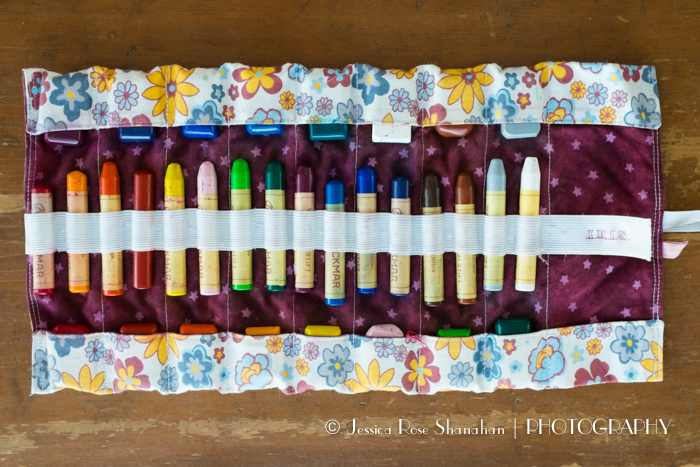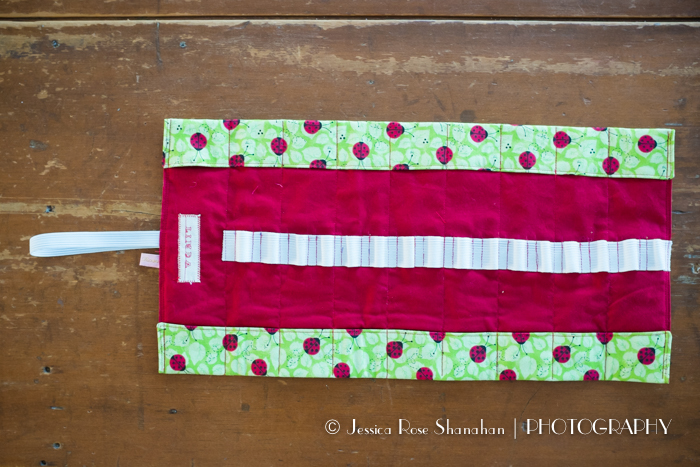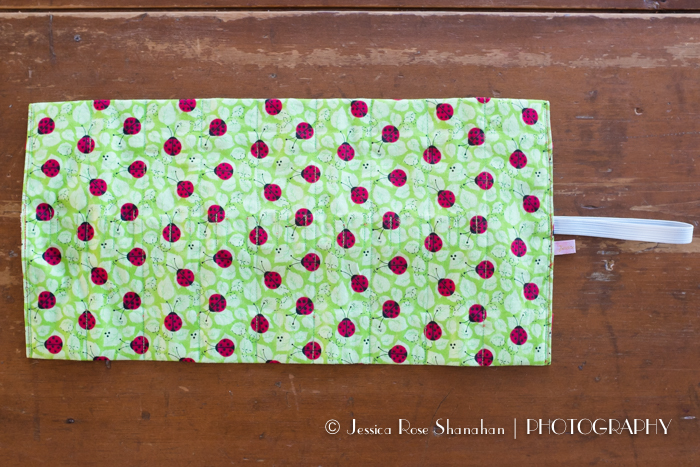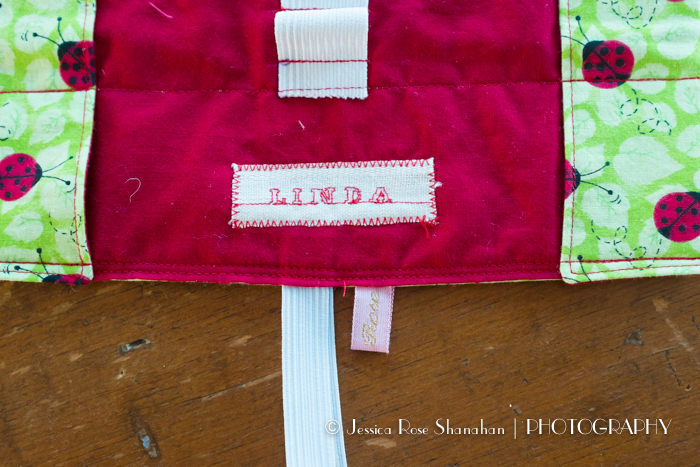At the end of first grade, the children were sent home for the summer with instructions to clean their crayons. The crayons are high quality and cost about two dollars per crayon. The children were also told to wash their crayon rolls (affectionately called “house of color” in French) gently, by hand, in cold water, and to hang them dry. The crayon rolls were made by a school parent, sold to the school, and paid for with the “materials fee” that we pay to the school.
Iris washed her crayon roll promptly, as directed. The crayon roll shrank. The crayons no longer fit. Her newly cleaned crayons were once again a mess from trying to fit them in a shrunken container. Iris was inconsolable. As the teachers were still in session for one week after the children got out for the summer, I wrote the teacher to ask her to give some words of consolation to Iris that everything would be fixed. The teacher never responded.
All summer, Iris asked what would happen with her crayon roll. I told her that the problem would be resolved when she went back to school. But this was not good enough for Iris. Part of being autistic is that “we will find out later” is a horrible answer. Of course she’ll get that answer plenty later on in life, but right now, a simple response from the teacher would have been lovely. Instead, Iris continued to worry all summer that she had done something horribly wrong.
I do not speak French, so therefore communication with the teacher is limited. Late summer, a friend found who the maker of the crayon roll was: Marie-Odile. Do you know her? What a lousy woman! The teacher assured my friend that the crayon roll would be replaced. Sadly, this never happened.
Come fall, I reminded the teacher about the crayon roll and asked her what I should do. She said she had not responded to my initial letter because she was on vacation (which was not true), but that I was free to make Iris a new crayon roll or to give her a box.
Meanwhile, I contacted the original maker of the crayon roll, Marie-Odile, to bring the issue to her attention & ask her why she didn’t pre-wash her fabric. I was polite. We exchanged several letters. She offered to sell me another crayon holder. I said I had no intention of giving repeat business to a person who made a faulty product. Finally she said that I was the only person to have this issue (which I knew was not true), that she didn’t wash her fabric because she did not want to iron it (lazy!), and that if I had any issues with her product I should contact the school.
I told her that whenever I have an issue with a product I buy, I contact the maker of the product to discuss the issue before raising a formal complaint with the vendor. Most people seem to prefer an opportunity to correct their mistakes. I said that I had not intended to complain to the school, but if she would like me to, I could complain to the director about her on her behalf. Of course, I did not expect her to write me back.
So Iris began 2nd grade with her crayons piled in a box instead of neatly organized in their house of colors. Not a big deal, really, except that Iris had to be different, and that neither the school nor the teacher nor Marie-Odile, who made the lousy crayon roll, was willing to admit that my time & money were being ill-spent.
The teacher later admitted to my friend that she herself never washed her own children’s crayon rolls. She said that really the parents ought not wash the crayon rolls— even though she specifically told them to do so. She was, in fact, unwilling to admit that she told the children to wash the crayon rolls. But why? Why the drama? Why not honesty?
It didn’t take me too long to come up with a pattern for a crayon roll for Iris & make her a new one, though it did take a lot of calculating and quite a bit of time, as all I had to measure off was a shrunken crayon roll. Iris’s new crayon roll is, beyond a doubt, the most beautiful house of colors in the class, as all the other children have either shrunken wrinkly off-white canvas crayon holders or regular-sized dirty off-white canvas crayon holders. Iris’s is decorated with flowers and stars and embroidered with her name.
Soon thereafter the teacher officially announced that several parents had problems with their crayon rolls shrinking after washing. This, she said, was to be dealt with by the school. I got the slightest acknowledgement of the trouble I had gone through: the teacher complimented Iris’s crayon roll. She said it was so very beautiful and that she herself would love to have one, as she, the teacher, has only a box for her crayons and has no house of colors at all.
The teacher was quite embarrassed that Iris repeated this to me. She said that it had been said jokingly, as a compliment. But, you see, I got the last laugh. For Christmas, I made the teacher a beautiful crayon holder. Now every time she uses her crayons, she will think of Iris and smile. Ha-ha!
Iris’s house of color, in use. She brought it home for me to copy the measurements—

The teacher’s house of color—

What happy ladybugs on the outside!

I even remembered to attach the name tag before sewing the entire thing together.





Why didn’t I see this earlier. What a lovely crayon roll. It’s sort of like a knitting needle roll. Or — if you might be an itinerant cabinet maker — a tool roll. Or — if you know you’ll freeze your toes off during a Quebec winter and need to carry spares — a tootsie roll.
I never thought of carrying spare toes! I have to check the attachment on mine & see if I can order some with the same configuration.